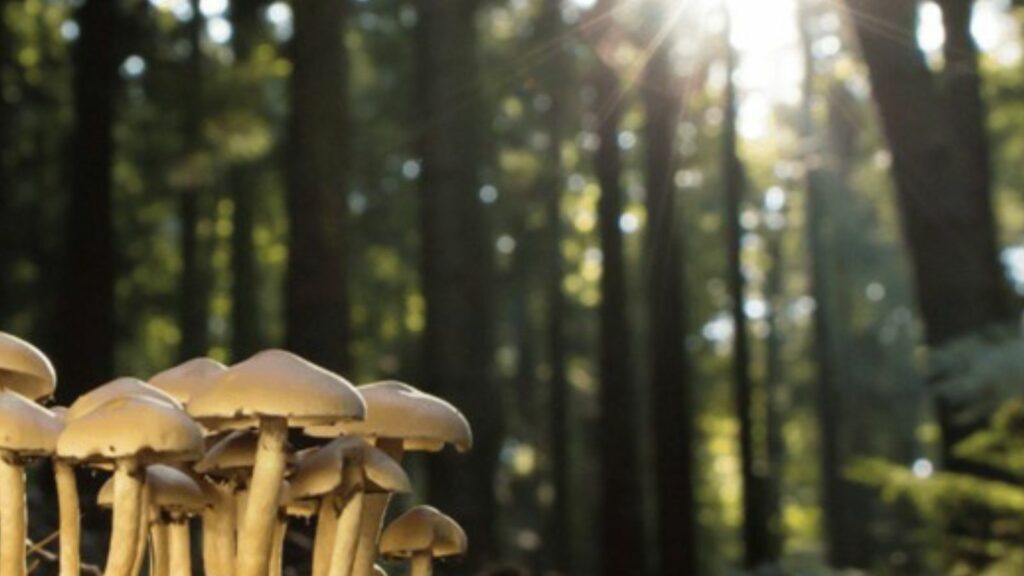British Columbia’s relationship with magic mushrooms is as rich and complex as the fungal networks beneath its rainforests. From ancient Indigenous traditions to 1960s counterculture revolutions and modern therapeutic breakthroughs, psilocybin-containing fungi have shaped the province’s social and ecological landscape. Today, BC stands at the forefront of Canada’s psychedelic renaissance—a convergence of history, science, and cultural transformation.
Roots in the Earth: A Brief History
While evidence of pre-colonial psilocybin use among coastal First Nations remains limited, mycologist R. Gordon Wasson proposed that some Indigenous cultures may have restricted visionary mushrooms to shamans, leading to broader cultural taboos 1. Modern BC’s psychedelic story ignited in 1965, when RCMP confiscated Psilocybe semilanceata (Liberty Caps) from UBC students—the first documented recreational use outside Mexico 1. These hardy grassland mushrooms, possibly introduced via European livestock, became synonymous with BC’s autumn landscapes.
By the 1970s, Haida Gwaii’s pastures drew hundreds of pickers, sparking seasonal “mushroom wars” between residents and harvesters 1. A 1979 court ruling briefly decriminalized natural mushroom possession, accelerating commercial harvesting until the Supreme Court reversed the decision in 1982 15. Despite prohibition, BC’s climate sustained wild patches and clandestine cultivation, cementing the province’s status as Canada’s psychedelic epicenter.
The Therapeutic Renaissance
Clinical research is now validating what traditional practitioners long understood: psilocybin shows remarkable promise for mental health. Studies indicate profound benefits for treatment-resistant depression, end-of-life anxiety, and PTSD 510. For terminal patients like Janis Hughes, psilocybin therapy alleviated existential dread when conventional treatments failed 5. Yet access remains fraught—Health Canada’s Special Access Program (SAP) permits medical use but requires physician approval and restricts patients to synthetic psilocybin 58.
BC-based organizations are pioneering solutions:
- Numinus Wellness: Operates clinics in Vancouver and Nanaimo offering legal psychedelic-assisted therapy under SAP, with therapist-guided sessions costing ~$750 510.
- TheraPsil: Advocates for regulatory reform and supports patients navigating SAP applications 5.
- Underground Practitioners: “Journeymen Collective” and similar groups offer guided experiences outside legal frameworks, highlighting the access gap 5.
Foraging and Access in Modern BC
Despite federal prohibition, psilocybin is accessible through several channels:
1. Wild Harvesting
Liberty Caps (P. semilanceata) appear in coastal pastures after autumn rains. Psilocybe cyanescens (Wavy Caps) thrive in woodchip beds across Vancouver Island and the Lower Mainland. Caution: Misidentifying toxic look-alikes like Galerina marginata can be fatal. Always consult expert foragers or resources like Mushrooms of British Columbia.
2. Dispensaries and Storefronts
Dozens of unregulated shops operate openly, particularly in Vancouver. As of 2024, Canada had 57 dispensaries—mostly in BC and Ontario 4. Notable examples:
- Dana Larsen’s Ventures: Includes dispensaries resembling cafés, selling microdose capsules and mushroom chocolates 10.
- Chain Retailers: Brands like “PolkaDot” offer infused edibles, though product consistency is unverified 14.
- Online Delivery: Good Friday Wellness delivers discreetly throughout BC including Vancouver with mushroom products rigorously tested for purity and potency.
Many British Columbians share their experiences with these shop online forums like reddit.
3. Home Cultivation
BC’s counterculture pioneers developed accessible growing techniques. The 1983 book The Mushroom Cultivator by Washington’s Paul Stamets (featured in Fantastic Fungi) democratized cultivation 911. Today, “space-bag” kits enable home growth of species like Psilocybe cubensis.
Cultural Mycelium: From Taboo to Acceptance
BC’s shift from mycophobia to mycophilia mirrors global trends. Early Anglo-Canadian settlers avoided wild fungi, favoring bland canned Agaricus 9. The 1970s psychedelic movement—coupled with Asian culinary influences introducing shiitake and oyster mushrooms—sparked gastronomic and spiritual curiosity 9. By the 1980s, Vancouver Mycological Society forays normalized mushroom appreciation, while activists like Dana Larsen framed psilocybin access as a harm-reduction issue 910.
Modern BC culture embraces both:
- Ceremonial Use: Contemporary shamans guide sessions for spiritual exploration
- Microdosing: Professionals use sub-perceptual doses for creativity and mood enhancement
- Medical Advocacy: Terminally ill patients are launching Charter challenges for treatment access 5
Navigating Risks and Regulations
Psilocybin remains illegal under the Controlled Drugs and Substances Act, though enforcement prioritizes opioid trafficking 510. Health Canada warns of dangers:
- Psychological Risks: “Bad trips,” psychosis triggers in predisposed individuals, and accidental injuries 8
- Product Uncertainty: Unregulated edibles may contain inconsistent dosages or adulterants 14
- Medication Interactions: SSRI antidepressants may diminish effects; lithium combinations risk seizures 8
Always start with low doses, avoid solo journeys, and verify sources.
The Future Beneath Our Feet
As clinical trials expand and decriminalization movements gain momentum, BC’s magic mushroom legacy continues evolving. From Haida Gwaii’s contested fields to Vancouver’s dispensaries and therapeutic clinics, psilocybin reflects a profound dialogue between humans and nature—one promising healing, insight, and a reimagined relationship with consciousness itself.
